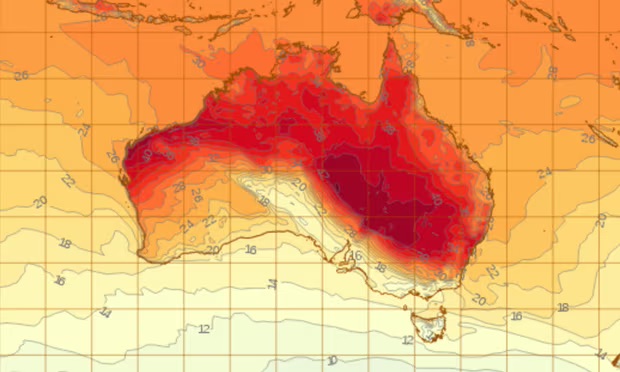Last weekend, Australia faced scorching heat, marked by extreme temperatures above 43C that sparked approximately 600 additional emergency calls, ignited numerous bushfires, and even led to 4 urgent hospitalizations at a Sydney music festival. Saturday also saw Sydney Airport record a temperature of 43.5C at 1.01pm, a December record, beating 43.2C, set in 1994.
At least 100,000 people descended on the entertainment precinct at Homebush where the mercury climbed to 42C on Saturday afternoon. Foo Fighters played at Accor Stadium, while rapper 50 Cent performed at Qudos. Punters were warned with emails and text messages about being 'heat safe'.
Today, as temperatures in NSW rise above 40C degrees, authorities are asking residents to turn off any unnecessary electrical appliances between 5-9pm (dishwashers, and washing machines), as the grid faces an increased load.
There's a lot for humans and machines to be concerned with when it comes to excessive heat.
Heatwave Aftermath
The relentless heatwave that enveloped Sydney and most of New South Wales prompted a surge in emergency calls, leaving paramedics grappling with a 20% increase in callouts over typical summer Saturdays. Thousands experienced power outages and bushfires fueled by the scorching conditions. On Sunday, even though cooler conditions prevailed, 86 fires were still burning, 26 of which were not contained.
Elevated Fire Risk Looms in Previously Untouched Australian Areas, Fueled by High Loads and Extended Seasons Amid Global Heating Concerns.
Areas largely untouched by the 2019-20 fires, including the Sydney basin, coastal regions, and the Hunter, have even higher fuel loads that have now dried out. High fuel and grass loads that are sufficiently dry can support intense fires that spread rapidly.
Greg Mullins, one of Australia’s longest-serving fire commissioners and now a campaigner with Emergency Leaders for Climate Actions, said there are more intense bushfire seasons due to global heating.
“The wildcard in this is climate change ... our fire seasons are now months longer than they used to be,” Mullins said, “I’ve been fighting fires for over 50 years now … the average temperatures are warmer, but the extremes are far more extreme.”
Roughly a third of NSW is expected to face higher fire risk this summer, including large central and northern areas, and pockets of bushland along the coast.
*
BlazeShield's mist technology can not only serve as a firefighting tool, but also as a piece of "crowd cooling" technology. It's adaptive and aligns with the need for new solutions in the face of evolving climate challenges.
If you'd like to know more, visit www.blazeshield.com

